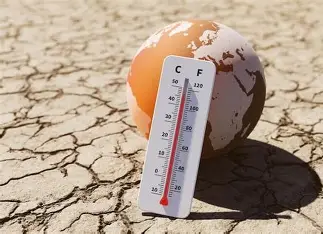In the face of rising global temperatures, vanishing forests, and polluted air, the humble act of planting trees has emerged as one of the most powerful tools to combat environmental degradation. Plantation—the deliberate process of growing trees and plants—is not only essential for restoring ecological balance but also for improving the quality of human life. While it may seem like a simple act, its ripple effects can be monumental.
This blog explores the significance of plantation, its wide-ranging benefits, and how individuals and communities can contribute to a greener, healthier planet.



Why Plantation Matters
Trees are often called the lungs of the Earth, and for good reason. They absorb carbon dioxide—a key contributor to global warming—and release oxygen, making the air breathable for all living beings. As deforestation continues at an alarming rate due to urbanization, agriculture, and logging, the role of plantation in reversing the damage becomes even more critical.
Beyond environmental concerns, plantation also supports economic development, social well-being, and even mental health. A single tree can be a powerful agent of change, and when multiplied across communities and nations, the impact becomes transformative.


Environmental Benefits
- Air Purification
Trees absorb harmful gases like carbon monoxide, sulfur dioxide, and nitrogen dioxide. They trap dust, smoke, and pollen, purifying the air and reducing the risk of respiratory illnesses. - Climate Regulation
Forests and green areas moderate the climate by providing shade, cooling urban heat, and maintaining humidity. They also play a major role in the water cycle, influencing rainfall patterns. - Soil Conservation
Tree roots bind soil particles together, preventing erosion caused by wind and rain. They also enhance soil fertility through the decomposition of fallen leaves and organic matter. - Biodiversity Support
Forests are home to over 80% of terrestrial species. Plantation efforts that use native species help preserve these vital ecosystems and protect endangered flora and fauna.
Economic and Social Benefits
- Employment Opportunities
Tree plantation drives and forest maintenance provide jobs in rural and urban areas, especially in agroforestry, landscaping, and ecotourism sectors. - Agricultural Support
Trees contribute to better crop yields by providing windbreaks, improving soil health, and supporting pollinators like bees and birds. - Mental and Physical Health
Green spaces reduce stress, promote physical activity, and improve mental well-being. Urban plantations, parks, and rooftop gardens have been shown to lower anxiety and depression rates.
Community Engagement
Plantation activities foster a sense of responsibility and cooperation within communities. Schools, NGOs, and local bodies often unite over tree-planting drives, strengthening social bonds.
Urban Plantation: A Modern Necessity
With more than half the world’s population living in urban areas, cities are becoming hotspots of pollution and climate stress. Urban plantation involves planting trees in cities—along roads, in parks, on rooftops, and in residential complexes. These green pockets offer crucial benefits like:
- Reduced noise and air pollution
- Improved aesthetics and real estate value
- Temperature control and reduced energy use in buildings
- Enhanced urban biodiversity
Even planting small shrubs or balcony gardens contributes to the urban ecosystem.
How to Get Involved
Getting started with plantation doesn’t require massive resources or land. Here’s how you can contribute:
- Plant Native Trees
Choose tree species that are indigenous to your area. They require less maintenance and support local wildlife. - Join or Organize Plantation Drives
Participate in events organized by schools, NGOs, or local municipalities. Even planting one tree can make a difference. - Adopt a Tree
Commit to nurturing a tree from sapling to maturity. Regular watering, mulching, and protection can ensure it survives and thrives. - Support Reforestation Programs
Donate to or volunteer with organizations working to restore forests and natural habitats around the world.
Promote Awareness
Use social media and community platforms to educate others about the importance of plantation. Encourage your friends and family to take part.
Challenges to Overcome
While plantation is highly beneficial, it’s not without challenges. Poor planning, planting non-native or invasive species, lack of maintenance, and land-use conflicts can hinder success. To make plantation truly effective, it must be approached scientifically and sustainably, with long-term care in mind.
Governments and institutions must also support these efforts through policy frameworks, incentives, and educational programs.
Conclusion
Plantation is more than just planting a tree—it’s a step toward a cleaner, greener, and more sustainable world. Whether in rural landscapes or bustling cities, trees play a vital role in maintaining life as we know it. Each tree planted is a legacy, a promise to future generations that we care about the planet they will inherit.
So, let’s not wait. Pick up a sapling, dig a hole, and plant a better tomorrow—one tree at a time
FAQs
1. What is plantation and why is it important?
Plantation is the act of deliberately growing trees and plants to restore, enhance, or expand green cover. It is important because it combats climate change, purifies air, prevents soil erosion, supports biodiversity, and improves overall ecological balance. In urban and rural settings alike, plantations serve as natural infrastructure that supports life and environmental health.
2. How does plantation help fight climate change?
Trees act as carbon sinks, absorbing carbon dioxide (CO₂) from the atmosphere—a major greenhouse gas responsible for global warming. By storing carbon and releasing oxygen, plantations help regulate climate, reduce urban heat, and improve air quality, making them a vital part of climate action strategies.
3. What are the benefits of plantation in cities (urban areas)?
Urban plantations provide a range of benefits including:
- Reduction of air and noise pollution
- Lowering of urban temperatures (reducing heat island effects)
- Increased aesthetic value and mental well-being
- Better air quality and biodiversity in congested areas
- Shading that reduces electricity consumption in buildings
Even planting small trees, rooftop gardens, or potted plants on balconies contributes to urban greening.
4. Which trees are best to plant in my area?
It is best to plant native or indigenous tree species that are naturally adapted to your local soil and climate conditions. Native species require less maintenance, thrive better, and support local wildlife. Examples include neem, banyan, gulmohar, and jamun in India, or oak and maple in temperate regions.
You can consult local horticulture departments or forestry services for region-specific suggestions.
5.How can I take care of a tree after planting it?
Tree care is critical to ensure healthy growth. Here’s how:
- Watering regularly, especially during the first 2–3 years
- Mulching around the base to retain moisture and control weeds
- Protecting with guards to prevent damage from animals or human activity
- Pruning dead or diseased branches to promote strong growth
Monitoring for pests or diseases and taking timely action

